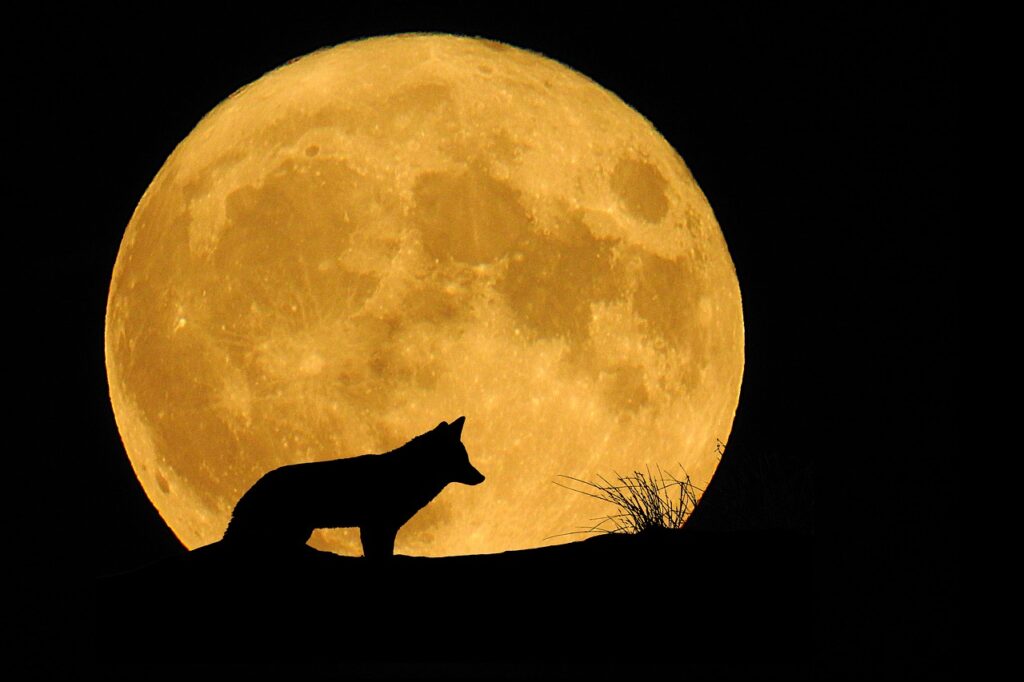The first full Moon of 2023 is commonly called a Wolf Moon.
What is a full moon?
As the Moon orbits the Earth, the side that faces the Sun is always illuminated. However, our perspective from earth is quite different. A new moon occurs when the Moon’s orbit around Earth places it between Earth and the Sun. From our viewpoint, the Moon’s surface looks dark because the side that is illuminated is facing away from Earth. As our single satellite continues to orbit around the Earth, an increasing portion of the illuminated part of the Moon can be seen here on Earth, until it finally becomes fully illuminated or a “full” moon. A full moon results when the Earth is between the Moon and the Sun.
As the amount of Moon that is visible grows, it is in the waxing stage; as the amount decreases, it is in the waning stage. In the Northern Hemisphere, the amount of visible moon increases from right to left; in the Southern Hemisphere, it increases from left to right.
Why is it called a “Wolf Moon”?
It has been conjectured that the full moon in January is called a Wolf Moon because wolves were more likely heard howling outside Native American villages during this time.
It was once thought that wolves howled during winter due to hunger, but it is now known that wolves howl for various reasons. Howling, along with other vocalizations, are typically used to define territory, reinforce social bonds, locate members of the pack, and organize hunting.
The Assiniboine people of the Northern Great Plains, called this moon the “Center Moon” because it came in the middle of winter.
Other Native American names for this moon include Cold Moon, Frost Exploding Moon, Freeze Up Moon, Severe Moon, Hard Moon, Canada Goose Moon, Great Moon, Greetings Moon, and Spirit Moon.
The first full Moon of 2023 is technically a “Micro Moon” because it will be at the farthest distance from the Earth, roughly 252,600 miles away.
Although the Wolf Moon is full on January 6, moonrise is during daylight, therefore moonrise on the next day, January 7, which occurs at 6:02 pm, is the best time to observe the Wolf Moon.











